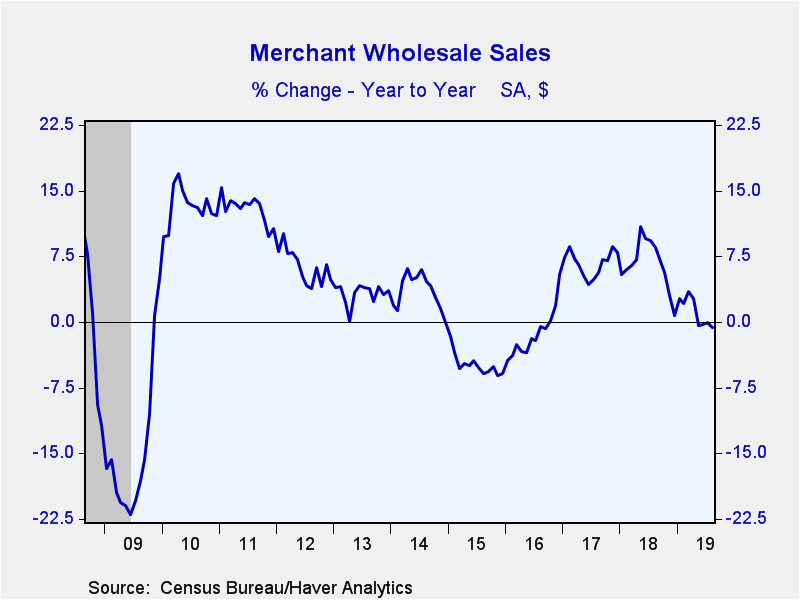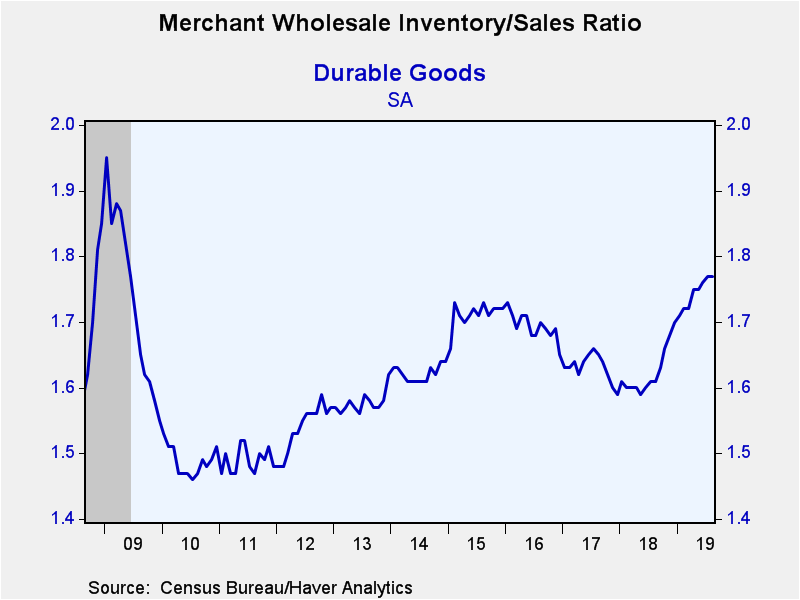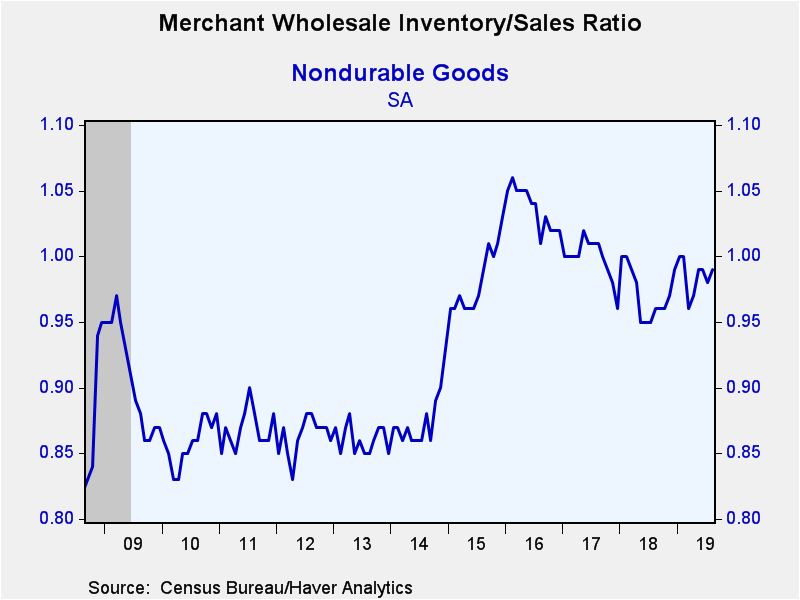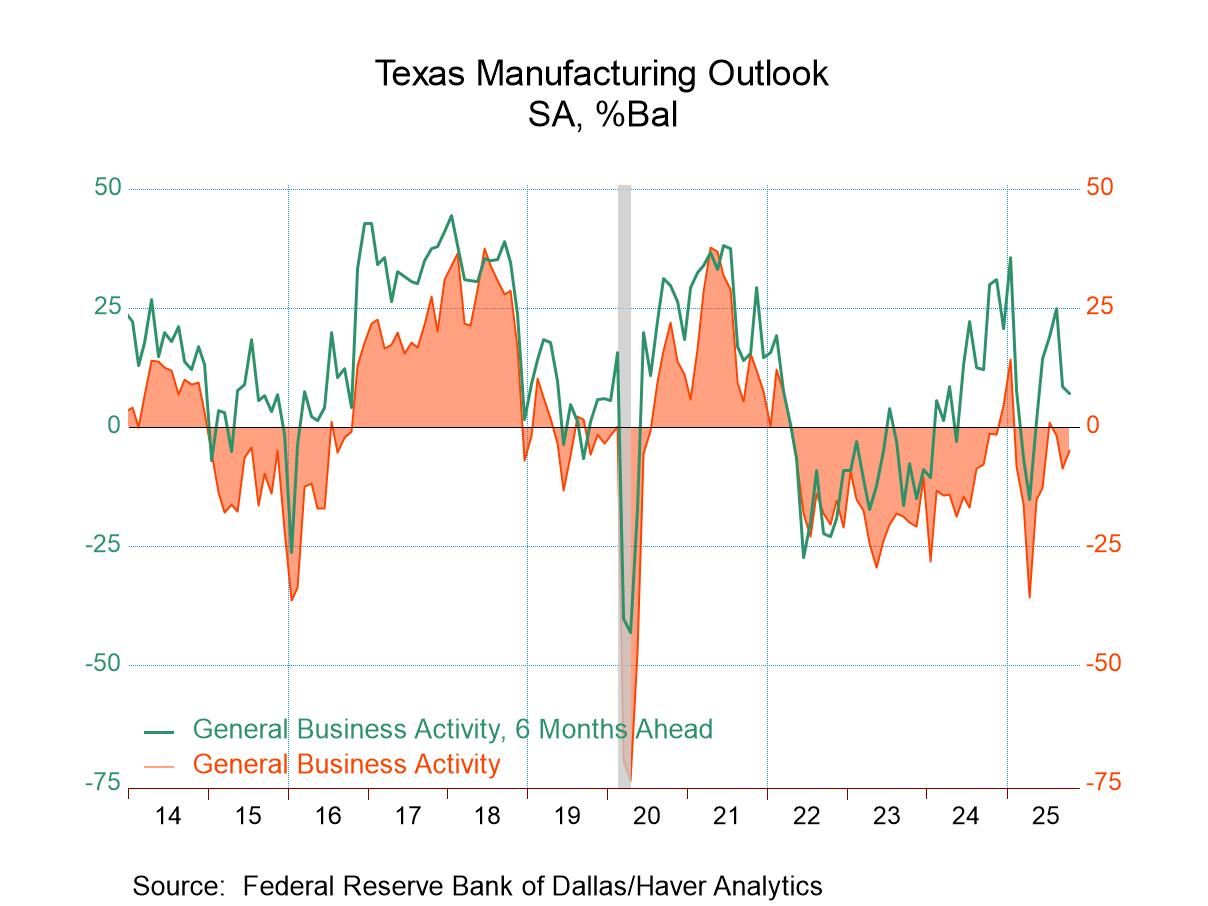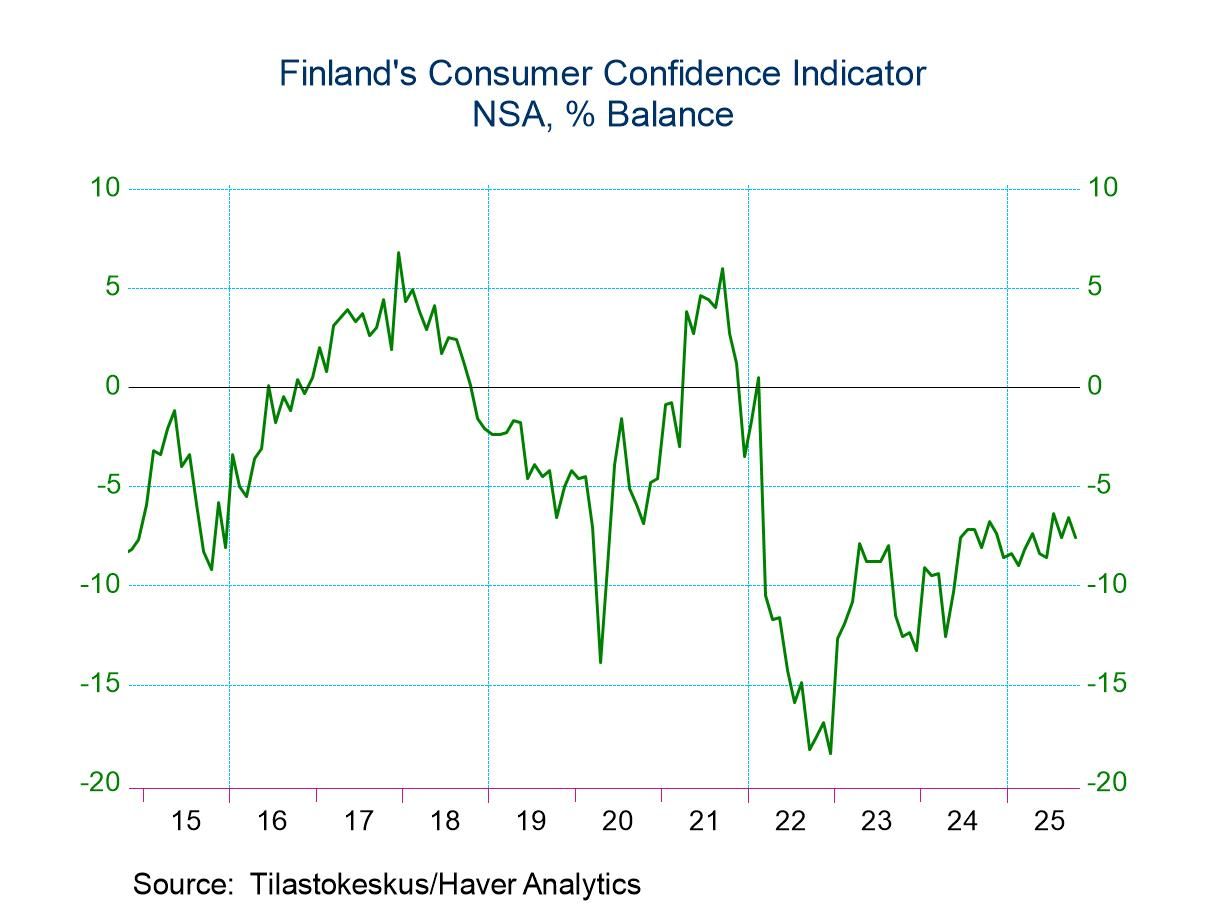 Global| Oct 09 2019
Global| Oct 09 2019U.S. Wholesale Inventories Rise Steadily as Sales Stabilize
by:Tom Moeller
|in:Economy in Brief
Summary
Wholesale inventories increased 0.2% during August (6.2% y/y), the same as in July. A 0.4% rise had been expected in the Informa Global Markets Survey. Durable goods inventories rose 0.3% (8.3% y/y) in August after holding steady in [...]
Wholesale inventories increased 0.2% during August (6.2% y/y), the same as in July. A 0.4% rise had been expected in the Informa Global Markets Survey.
Durable goods inventories rose 0.3% (8.3% y/y) in August after holding steady in July. Machinery inventories, the largest sector, rose 0.9% (11.1% y/y), while motor vehicle inventories, the second largest group, edged 0.1% higher (14.8% y/y). Electrical equipment inventories rose 0.3% (5.8% y/y). Inventories of nondurable goods ticked up 0.1% (2.9% y/y) after a 0.4% rise. Drug inventories, which make up a quarter of nondurable inventories, increased 0.9% (3.1% y/y). Apparel inventories increased 1.2% (13.3% y/y) after falling for four straight months. Inventories of chemicals declined 3.1% (-4.6% y/y) and the value of petroleum inventories fell 4.5% (-9.5% y/y).
Wholesale sales held steady (-0.7% y/y) after a 0.2% rise. The Action Economics Forecast Survey called for a 0.3% rise.
Durable goods sales rose 0.3% (-1.6% y/y) after two months of decline. Electrical equipment sales, the largest sector, rose 1.2% (-7.4% y/y) after falling for four straight months. Professional and commercial equipment shipments, which includes computers, fell 1.2% (+0.7% y/y). Motor vehicle sales improved 0.8% (4.7% y/y). Nondurable product sales declined 0.3% (+0.3% y/y). Drug sales, which are nearly the largest category of nondurable sales, eased 0.2% (+4.2% y/y) while apparel sales declined 5.1% (-10.0% y/y), off for four consecutive months. Chemical shipments increased 3.3% (2.9% y/y) but grocery product sales slipped 0.2% (+4.2% y/y). Petroleum product deliveries eased 0.1% (-7.8% y/y).
The inventory-to-sales (I/S) ratio at the wholesale level held steady at a heightened 1.36 for the fourth consecutive month.
The durable goods I/S ratio was steady at 1.77, the highest level since 2009. The machinery ratio rose to 2.82, while motor vehicles eased to 1.76, nearly a ten-year high. The I/S ratio for nondurable goods was fairly steady at 0.99. The paper industry I/S ratio rose to a record 1.26. The drug industry I/S ratio remained low at 1.08, while the chemical industry ratio eased to 1.07. The petroleum industry I/S ratio was little changed at 0.35.
The wholesale trade figures and oil prices are available in Haver's USECON database. The expectations figure for inventories is contained in the MMSAMER database. Expectations for sales are in the AS1REPNA database.
| Wholesale Sector - NAICS Classification (%) | Aug | July | June | Aug Y/Y | 2018 | 2017 | 2016 |
|---|---|---|---|---|---|---|---|
| Inventories | 0.2 | 0.2 | -0.1 | 6.2 | 7.1 | 3.3 | 1.9 |
| Sales | 0.0 | 0.2 | -0.3 | -0.7 | 6.8 | 6.3 | -1.2 |
| I/S Ratio | 1.36 | 1.36 | 1.36 | 1.27 (July '18) | 1.29 | 1.30 | 1.35 |
Tom Moeller
AuthorMore in Author Profile »Prior to joining Haver Analytics in 2000, Mr. Moeller worked as the Economist at Chancellor Capital Management from 1985 to 1999. There, he developed comprehensive economic forecasts and interpreted economic data for equity and fixed income portfolio managers. Also at Chancellor, Mr. Moeller worked as an equity analyst and was responsible for researching and rating companies in the economically sensitive automobile and housing industries for investment in Chancellor’s equity portfolio. Prior to joining Chancellor, Mr. Moeller was an Economist at Citibank from 1979 to 1984. He also analyzed pricing behavior in the metals industry for the Council on Wage and Price Stability in Washington, D.C. In 1999, Mr. Moeller received the award for most accurate forecast from the Forecasters' Club of New York. From 1990 to 1992 he was President of the New York Association for Business Economists. Mr. Moeller earned an M.B.A. in Finance from Fordham University, where he graduated in 1987. He holds a Bachelor of Arts in Economics from George Washington University.



